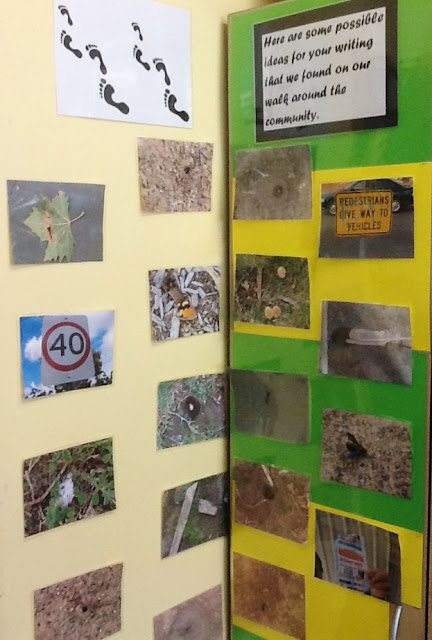Views From Writing Classrooms - Effective Use of Anchor Charts and Displays
I was reminded recently
that when teachers complain that they have no power it is simply not true. They
control the very weather in their classrooms. Upon entering a classroom it
takes little time to assess what the teacher values. The evidence is all around
the room. It is revealed in the atmosphere that exists in the room, the
interaction between the students themselves, and between the teacher and the
students. It is also revealed in the physical environment. The presence of
anchor charts reveals the tracks of the learning taking place. The way they are
used to support student learning reveals the value teachers place on such
resources. When students are free to access resources within the room, it reveals
the levels of trust that exist.
I have been gathering evidence from a host of classes lately. The data reveals how teachers are responding to the needs of their developing writers. Supporting them and directing their attention to important ideas about aspects of writing. In these classrooms charts and displays are not merely wall paper, but living, breathing resources used to support the important work of that particular learning community. These documents have a deliberate purpose. A purpose that is immediately clear to visitors entering these learning zones.
I share some of the treasure I have harvested lately. I commend it to all as exemplary practice and mindful pedagogy that is supporting the writing development of students across a range of grade levels and across a variety of school settings.
I have been gathering evidence from a host of classes lately. The data reveals how teachers are responding to the needs of their developing writers. Supporting them and directing their attention to important ideas about aspects of writing. In these classrooms charts and displays are not merely wall paper, but living, breathing resources used to support the important work of that particular learning community. These documents have a deliberate purpose. A purpose that is immediately clear to visitors entering these learning zones.
I share some of the treasure I have harvested lately. I commend it to all as exemplary practice and mindful pedagogy that is supporting the writing development of students across a range of grade levels and across a variety of school settings.
 |
| In a Grade 2 classroom this display highlights examples of attenion grabbing leads students have created alongside exmples the students have harvested from books they are currently reading. |
.JPG) |
| These Grade 1 students choose to sit and continue their writing independenlty. |
.JPG) |
| In this Grade 1 classroom the teacher has set up flexible seating arrangement so students may make informed choices about where they need to sit according their immeidate needs as writers. |
 |
| This anchor chart details how the media uses persuasive techniques to exert influence |
Grade 2 This display alerts young writers to the range of strategies
we undertake when preparing to write.
 |
| In this classroom both the teacher and her students track their respective postions within the process as they work through their writing pieces. |







A great reminder, Alan. Having just taken a poetry walk myself this evening through our field I had to smile at the pictures for writing ideas. I also really like the above chart that shows where students are in the writing process.
ReplyDeleteCathy
Hi Alan! I'm currently in New York and logged onto your blog to show Leah Mermelstein. I love this post! Leah and I have been talking about the children being in the 'driver's seat' of their learning and this post reminds me of how, as they say in Reggio Emilia, the environment is the "third teacher". I love the Grade One class where the kids decide what, how, where and who to work with! Thanks for the ongoing inspiration. I'm going to share this with my Young Writers Study Group of 16 very enthusiastic educators. Cheers!
ReplyDeleteLisa